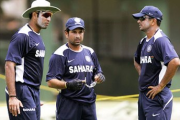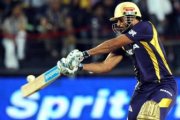The past week also saw the retirement of one of the finest captains of this era, the big Graeme Smith. It may have surprised a few considering that Smith had only turned 33 a month ago. Considering his age, it seems rather surprising that he had been at the helm of South African affairs for the last 11 years.
Smith was handed the reins at the age of 22 making him South Africa’s youngest ever skipper. Smith was barely eight tests old and South Africa had just suffered yet another ignominious exit from the World Cup, this time in front of their home fans. South African needed a change and rather surprisingly chose Smith, who was not even in the original World Cup squad to start off with. The nation needed a leader to restore the fans’ faith in the game, which was shattered by the match fixing allegations and involvement of Hansie Cronje, their former hero, in rigging games. Over the next decade, Graeme Smith can proudly say he has been successful in that mission, to an extent, at the least.
There were questions raised about Smith’s appointment as skipper after barely a year of international exposure, but it took Smith only three test matches to prove his mettle. Two consecutive double hundreds against England announced his arrival on the international scene. Ten years later, Smith bowed out as the only player to have captained in over a 100 tests, the only captain with over 50 wins to his name and with 27 hundreds, none of them in a losing cause.
Questions were always raised about Smith’s batting technique which was definitely not the best in the world. His broad stance and his tendency to move across and play on the leg side made him a perennial leg before wicket candidate, especially against left arm seamers. But Smith made up for his lack of technique with unmatched grit and determination. This was best highlighted in a game in Sydney in early 2009 where he came out to bat at No.11 with a broken arm and almost denied Australia a win with his defiance.
With his technique, you could almost call Smith a walking wicket with the ball coming into him. But Smith used his stance to his advantage more often than not. Anything partially on the leg side would be whipped away to the midwicket boundary and anything marginally outside off would be thrashed though the covers, which definitely were not the prettiest looking shots for a man with the stature of Smith.He also was a batsman who would put a value on his wicket and who stood up when it mattered the most. This is best illustrated in the fact that he ends up as the second highest run scorer in the fourth innings of Tests, only 15 runs behind the great Sachin Tendulkar, but with an average a full 15 points more than the little Master. He also has four centuries to his credit in successful chases, which is a record, and probably the best of the lot coming in a chase of 414 against Australia in Perth. It is also quite fitting that Smith played his last game against Australia with some of his best performances coming against the nation from Down Under including the brilliant 91 he scored at the top of the innings in a one of a kind chase of 438 in an ODI in Johannesburg in 2006.
As a test skipper, Smith’s stats are unmatched. But captaining a nation like South Africa is more than just the numbers. With a democracy that is younger than him and political pressures and quotas in team selection, Smith has done more than a magnificent job in leading South Africa for over a decade. He took over a team that couldn’t get its calculations right to a team that sits atop the World rankings in tests and briefly held that position in ODIs as well. He helped the country come out of Cronje’s shadow and believe that they could be world beaters. One of the most impressive aspects of his captaincy was the number of Test series that South Africa won away from home. Under Smith, the Proteas beat Australia, India and England in their own backyard and lost only four of their 20 overseas tours.
When Smith entered the international arena, he was characterized as bold and brash and as a batsman that wasn’t technically gifted. He leaves the field as one of the greatest leaders in World cricket, a batsman with over 15,000 international runs and his exit will leave a big hole not only at the top of South Africa’s batting order, but also as the personality that the country looked upon in times of distress!
Tags: Cricket, Graeme Smith, Proteas, South Africa, Sports











